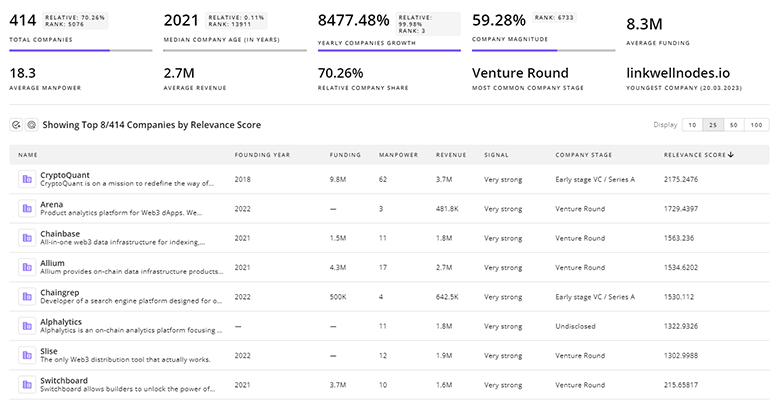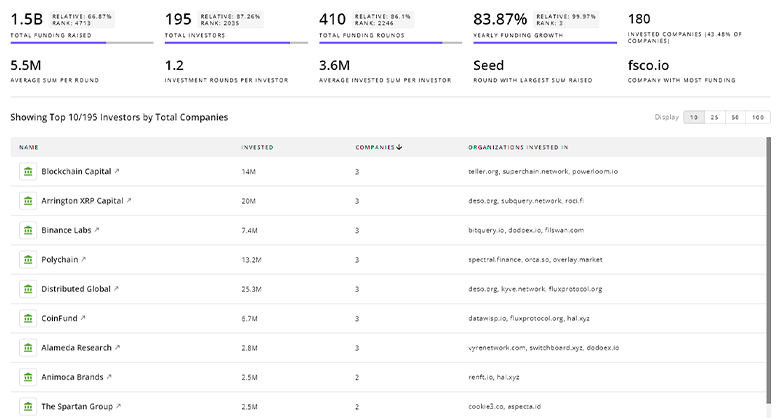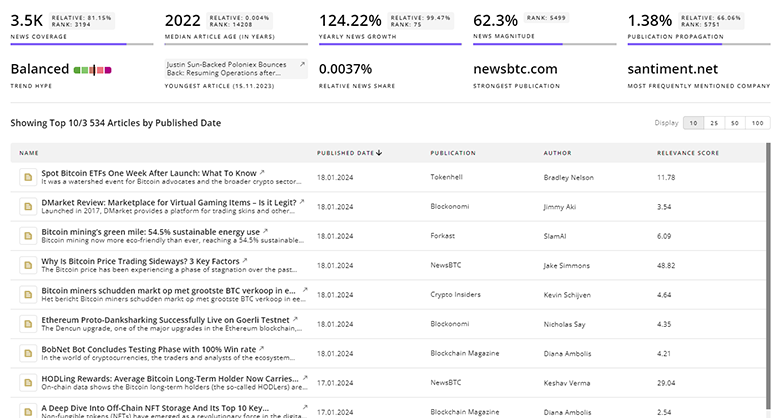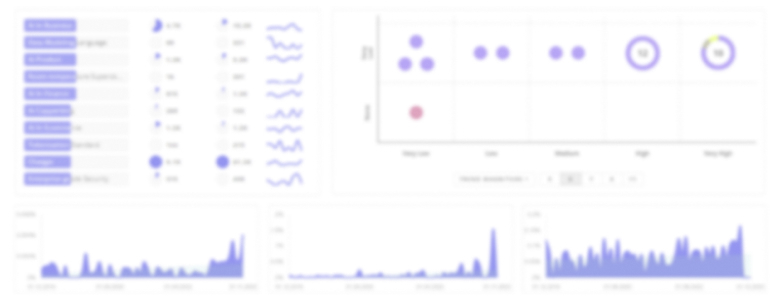
Workforce Management Report
: Analysis on the Market, Trends, and TechnologiesThe workforce management (WFM) landscape is evolving to meet the demands of today’s distributed and dynamic work environments, with organizations increasingly implementing integrated scheduling, time and attendance, leave management, and compliance solutions (Market Research Future). Recent market studies estimate that global WFM solutions could reach multi‐billion-dollar valuations in the coming decade due to rising remote work, digitalization, and improved employee engagement capabilities (Precedence Research). The sector now leverages advanced AI, mobile technologies, and cloud platforms to optimize scheduling, labor forecasting, and real‑time compliance, while also addressing varied stakeholder needs across diverse industries.
59 days ago, we last updated this report. Notice something that’s not right? Let’s fix it together.
Topic Dominance Index of Workforce Management
To understand the relative impact of Workforce Management relative to other known Trends and Technologies, our Dominance Index examines three correlated timelines: the volume of articles published, the number of companies founded, and the intensity of global search interest.
Key Activities and Applications
Workforce management solutions drive daily operational efficacy by enabling accurate timekeeping, automated employee scheduling, and comprehensive leave management. These systems facilitate labor forecasting so that organizations can quickly align their staffing with production, customer demand, and regulatory requirements (WorkForce Software). They also support integrations with payroll and human resource systems to reduce administrative overhead and manage employee performance through detailed data reports. Additionally, organizations use these systems to monitor remote and on‑site groups, thereby reducing labor cost leakage and ensuring regulatory compliance.
Emergent Trends and Core Insights
The market is witnessing a shift toward user-centred WFM solutions that provide flexible, real‑time visibility into workforces and adapt to remote, hybrid, and flexible work arrangements. There is growing adoption of AI and predictive analytics to forecast workload demands and optimize scheduling based on employee skills and historical performance data (ResearchNester). In addition, the integration of cloud-based solutions is allowing organizations to scale operations without the significant costs of on-premises deployments, while mobile accessibility is enhancing employee self-service, communication, and engagement. Regulatory compliance and the need for detailed labor cost tracking continue to drive solutions that help mitigate risks and ensure adherence to labor laws.
Technologies and Methodologies
Recent technological advances in WFM include cloud computing, biometric time clocks, and artificial intelligence-driven scheduling tools that automatically adjust rosters in response to disruptions. Modern systems employ machine learning algorithms to predict staffing requirements and optimize shift patterns based on real‑time data gathered from mobile time tracking and attendance devices. Methodologies now emphasize an integrated, end‑to‑end approach: from accurate time recording and dynamic roster creation to compliance reporting—all delivered via highly configurable, user-friendly digital platforms. This convergence of technologies supports both the operational efficiency of back‑office functions and the productivity of field-level employees.
Workforce Management Funding
A total of 765 Workforce Management companies have received funding.
Overall, Workforce Management companies have raised $40.5B.
Companies within the Workforce Management domain have secured capital from 2.9K funding rounds.
The chart shows the funding trendline of Workforce Management companies over the last 5 years
Workforce Management Companies
-
SimplyWork – SimplyWork focuses on streamlined digital workforce management through its no‑code, cloud‑based platform. The company’s approach minimizes technical training and reduces implementation overhead while ensuring that scheduling, time tracking, and attendance management are efficiently executed. Their solution is designed for small organizations looking to digitize their HR operations and improve productivity in a cost‑effective way.
-
CommunityWFM – Originally founded in 2005, CommunityWFM specializes in forecasting and scheduling for contact centers. The company offers two distinct product versions tailored to different scales of operations. Its focus on the contact center industry and its unique on-boarding methodology have made it a trusted partner among several U.S. brands, while maintaining a clear and simplified user experience.
-
Workforce Optimizer – AI Enabled WFM – Workforce Optimizer stands out with its AI-driven approach to predict labor demands and reassign schedules in real time. The firm uses advanced algorithms to synthesize various workforce factors and dynamically adjust staffing based on unexpected events. It serves a global clientele by helping organizations optimize resources, reduce overhead costs, and maintain compliance.
-
Smart Workforce – Based in the United Kingdom, Smart Workforce offers a cloud-based WFM solution designed for businesses looking to modernize and simplify their employee scheduling and shift management. Its platform enhances operational efficiency through intuitive scheduling and real-time reporting, while maintaining compliance and facilitating remote work management. Its strong emphasis on user-friendly design makes it a popular choice among SMEs.
-
Workyard – Workyard provides workforce management specifically tailored for construction crews, focusing on accurate time tracking, GPS-based verification, and comprehensive labor cost reporting. Their mobile app tracks crew attendance with high accuracy while integrating with payroll and project cost systems to ensure operational efficiency on job sites. This solution is ideal for companies in the construction industry seeking to reduce admin overhead and improve project profitability.
TrendFeedr’s Companies feature offers comprehensive insights into 5.3K Workforce Management companies.

5.3K Workforce Management Companies
Discover Workforce Management Companies, their Funding, Manpower, Revenues, Stages, and much more
Workforce Management Investors
TrendFeedr’s Investors tool offers you a detailed perspective into 3.1K Workforce Management investors and their funding activities. This information enables you to analyze investment trends and make informed decisions in the Workforce Management market.

3.1K Workforce Management Investors
Discover Workforce Management Investors, Funding Rounds, Invested Amounts, and Funding Growth
Workforce Management News
TrendFeedr’s News feature delivers access to 7.3K articles focused on Workforce Management. Use this tool to stay informed about the latest market developments and historical context, which is crucial for strategic decision-making.

7.3K Workforce Management News Articles
Discover Latest Workforce Management Articles, News Magnitude, Publication Propagation, Yearly Growth, and Strongest Publications
Executive Summary
In summary, workforce management solutions are increasingly essential for organizations to optimize their productivity, manage labor costs, and ensure compliance in today’s flexible and remote work environments. By employing AI, cloud technologies, and mobile solutions, modern WFM platforms enable efficient scheduling, real‑time data analysis, and improved employee engagement. The market is expected to experience substantial growth driven by the increasing need for digital transformation and the diverse application of WFM solutions across industries. Stakeholders must strategically implement these technological advances to refine operations, support regulatory compliance, and drive continued efficiency and performance.
We're looking to collaborate with knowledgeable insiders to enhance our analysis of trends and tech. Join us!








